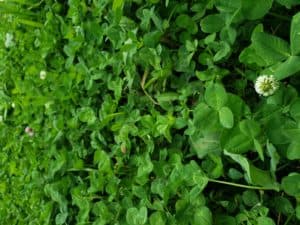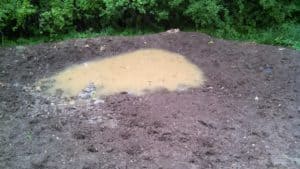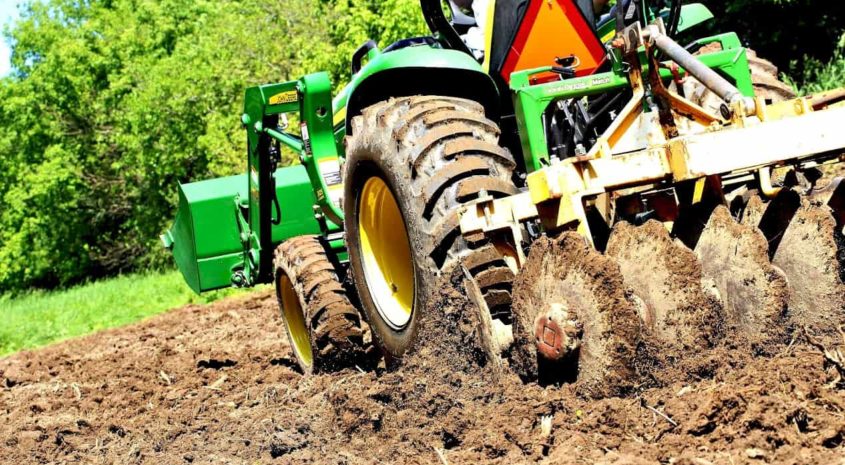Author: Coltyn Bettis UC Hunting Properties Land Specialist
If building your trophy wall is on your to-do list, then building your best food plot should be high on the list if not number one. Like the line from the movie Field of Dreams, “If you build it, they will come.” If you plant it, they will come.
Food Plot Soil Sampling
Soil like all of nature it has its checks and balances. To have a successful food plot you will NEED to do a soil test. Keeping your soil in tip-top shape is part of your land management duties. To get an idea of what condition your soil is in, it is helpful to know how it was managed before. Spring & Summer is a great time to pull samples and it is relatively easy to do. QDMA and other online blogs are also an excellent resource for further help.
You most likely will have contacted your local fertilizer company agronomist. Your local University Extension office or CO-OP will be happy to assist you also. Pulling your own sample and sending it in is easy and will save you money in the long run! It will require you to have some basic soil sampling tools, bags from the lab, and a bit of organization as you sample and label.
Once your soil sample from your food plot has been sent in and the laboratory receives it, the average turnaround time is about a week. When you receive your report, it will list for you the type of soil you have, the ph, various nutrients present with a graph displaying the interpretation of percentages from low to high. Rest assured if your local agronomist has pulled your samples he will be happy to go over the analysis and make the necessary recommendations for your food plots.
Location, location, location
Now that you have your property, it’s time to decide where you are going to build your best food plot. Your local United Country Land Specialist will have taken you on a sightseeing tour of your property. They will have pointed out to you several influencing factors such as tree types, pinch points, ridges… all the topography on your land that will assist you in your trophy hunting aspirations.
With topography in mind, you will begin locating pinch points and staging areas that your land specialist has pointed out to you. With this you can pin point out a location where you will plant forage, what you will plant, stand locations, and break trails for easy access to your stands. A great tool to aid you in your sketching is your areas aerial map or GIS Mapping service. There are other great resources such as Apps like Hunt Stand And ON X, that are invaluable to the avid hunter!
ALWAYS pick out your stand location prior to clearing or tilling up a food plot! Once that is done, you will need to make sure that you have a clean access to your stand both in and out. Getting out “clean” is more important than getting in. The bottom line is to have a plan so you minimize your intrusion to the area and have it located in a place where deer feel safe. Plot screens are a great tool for this.
 What to Plant
What to Plant
This is a tough topic because what to plant is very dependent on where in the country that you live and also what food is available to the deer currently. The first thing to do prior to design what to plant is to ask the farmer who is planting crop, what they are planting? Once you know the answer to this question I always like to plant something different than what the deer already have available to them. Generally speaking, you can’t go wrong with a blend with a vast seed variety and narrow down what plants are being browsed vs. what is not. This will provide you Intel on what to plant in the seasons to come.
Variety
It may be very tempting to harvest various hardwoods from your land, but that may be counterproductive. Hardwoods & Fruit bearing trees bring various nuts, fruit and seeds that deer and turkey love to feed on. It is a great long term, lower maintenance type of food plot that can be implemented into your property! Think of it as a buffet that you are offering to the wildlife present on your property. Various forms of habitat management such as controlled burns & water holes, also add to the variety of forage and types of resources that will become available to the wildlife.
If you are feeling a little bit out of your league when it comes to building your best food plots consider contacting the following:
- https://www.realtree.com/food-plots-and-land-management
- https://www.qdma.com/manage/habitat-improvement/
- https://www.qdma.com/manage/food-plots/
Building your best food plot will take some time. If the previous owner mismanaged the soil, it will be up to you to restore the soil to productive levels. With time and proper care, your patience and perseverance will pay off.
Your local UC Hunting Properties Land Specialist is committed to making sure you are armed with the best land information available. They look forward to your future hunting and management success.


